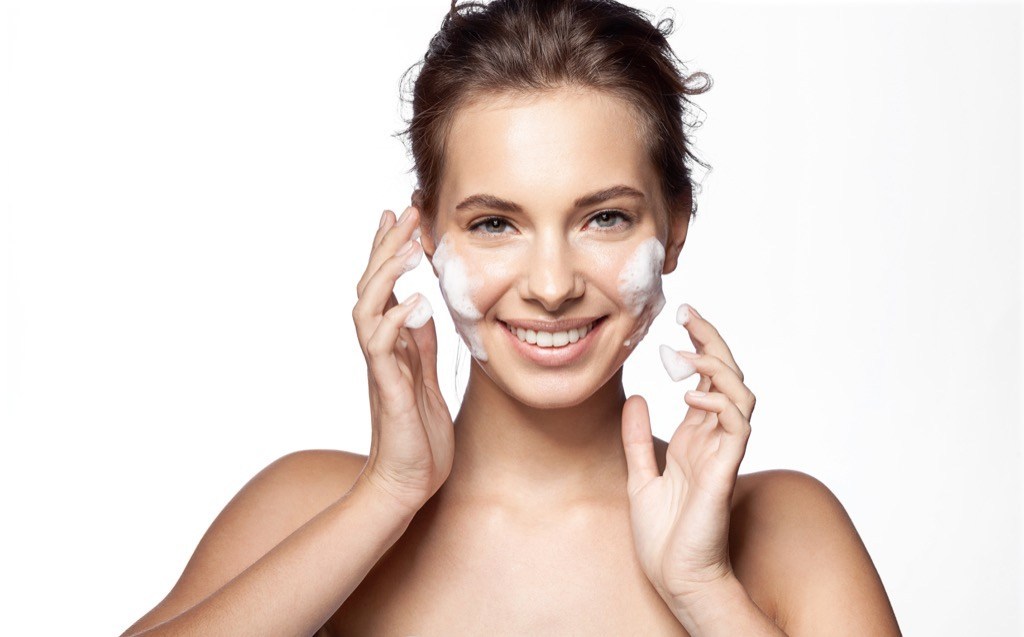Why witch hazel is a bit wicked (and we don’t mean good wicked)
Witch hazel has been touted for centuries as a natural remedy for many skin ailments and other problems. Applied topically, it is said to reduce puffy eyes, heal sunburn and treat acne/oily skin, among other things. Today, with the growing trend towards natural products, witch hazel is still a popular ingredient in beauty and skin products.
Having a bottle of witch hazel in the cupboard for emergency use can be a good idea. It does contain calming components that can ease discomfort from bug bites and stings, bruises and haemorrhoids. However some people use witch hazel daily, as part of their skincare routine. In the long-term, this can be a major problem.
What they don’t tell you about witch hazel
Predominantly found in North America and Asia, the witch hazel plant (Hammamelis virginiana) is a flowering shrub. The product we know as witch hazel is the clear liquid that has been extracted from its leaves, bark and twigs using distillation.
As you might expect with a product from a natural source, there are a bunch of antioxidants in witch hazel extract. Some are beneficial, but others (making up to 12% of witch hazel volume) come from a group of chemicals called tannins. Tannins are known to have a tightening and drying effect on skin, which can reduce oiliness and the appearance of pores. This may sound great, but in the long term tannins are sensitising and potentially irritating.
Furthermore, ethanol is used during the distillation process, which means witch hazel contains about 14-15% alcohol. This amount is high, considering that research shows that much lower amounts of alcohol are damaging to the skin and its protective barrier.
Finally, the oil that’s naturally occurring in witch hazel is the source of the potent fragrant sensitiser eugenol. Prolonged contact with eugenol may cause an inflammatory reaction and, eventually, allergic dermatitis. You really want to avoid this.
Does witch hazel really help with acne, blemishes and oily skin?
Witch hazel is known for its astringent properties, so some people believe the drying effect helps to treat acne and oily skin. However this drying out process can actually have the reverse effect, sending your skin into a frenzy of excess sebum production to compensate for the lack of moisture. The result is even more oiliness, more blockages and an increased risk of chronic acne.
The alcohol present in witch hazel, as mentioned above, can not only irritate and dry your skin too much, but it can also affect the integrity of your skin beneath the surface. We’re talking deep-down damage. Fortunately, there are better solutions for getting your acne prone or oily skin under control. To find a better strategy, you need to understand the causes of acne and learn how to treat them gently and naturally.
Witch hazel as a makeup remover and cleanser
Using witch hazel as a cleanser or makeup remover is a bad idea. The alcohol content and tannins are much too harsh for facial skin, especially the delicate skin around your eyes and on your neck. What’s more, compared to other products specifically designed for skin cleansing, witch hazel is a poor performer - particularly with some of today’s long-wearing cosmetics. Because of its ineffective cleansing ability, you’ll be scrubbing and pulling the skin trying to remove makeup and impurities. Over time this could lead to loss of elasticity and sagging skin - and who wants that?!
Instead, use a product with nurturing ingredients that are gentle on your skin and help maintain your skin’s natural pH balance, such as our Apple Juice Foaming Cleanser and Mango + Apricot Sorbet Cleanser.
Witch hazel for puffy eyes
If you’ve just watched your favourite romantic movie and had a bit of a cry, having some witch hazel in the cupboard could be useful. There is evidence that witch hazel can assist with reducing swelling and redness, but only if it’s caused by fluid retention. So the soothing and astringent properties in the solution can be effective in reducing puffiness from a good cry. But don’t try witch hazel on under eye bags that are due to ageing. Not only will it be ineffective, you could potentially damage the delicate skin around the eye area (more bagginess, more wrinkles!).
In summary, witch hazel does have some benefits for short-term skin emergencies, but the ongoing irritation of regular use will be detrimental, causing damage and premature ageing. With gentler and better natural alternatives readily available, you’re better off using something kinder to your skin.



Leave a comment
This site is protected by hCaptcha and the hCaptcha Privacy Policy and Terms of Service apply.